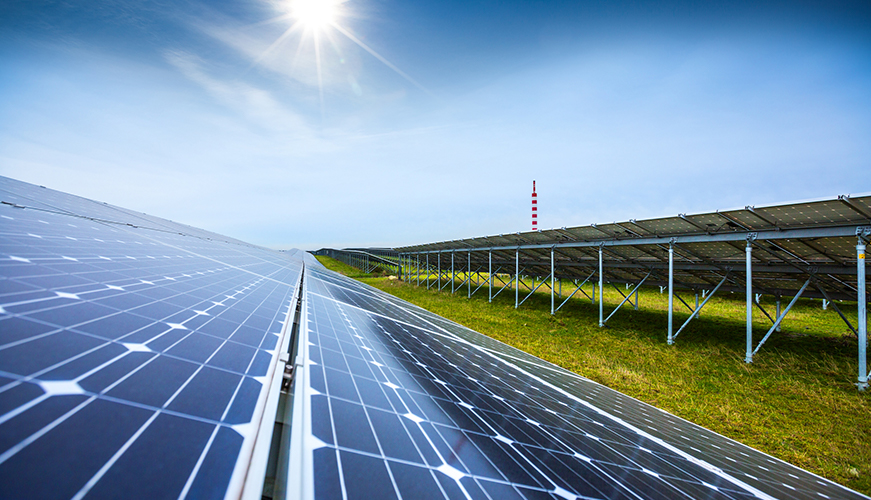Three years ago, we reached a turning point for energy when renewables outpaced fossil fuels in new electric capacity for the first time. From now on, the renewables industry will only continue to grow, and it may even replace the non-renewable industry as our primary source of energy in the future.
When most people think of renewable energy, the first thing that comes to mind is the environment. Certainly going green is a crucial factor in the push to replace fossil fuels with alternative energy sources (especially as climate change becomes an urgent global issue), but there may be more reasons to use renewable energy than you realize. The environment, politics, the economy, and foreign relations are all impacted by this industry, so it’s more important now than ever to stay informed about renewable energy.
Here are some of the ways renewable energy is changing the landscape:
- Jobs: The renewable energy industry is more labor intensive than the fossil fuel industry, and it creates more jobs per unit of electricity than its non-renewable counterpart. It also provides more job opportunities in rural areas.
- The Environment: Energy generation is the largest source of CO2 emissions in the world, so cutting down on greenhouse gases will have a significant impact on climate change. Renewables also minimize air and water pollution, making the earth a healthier, safer place to live.
- Energy Independence: If the United States can rely on energy produced by its own renewable sources, it won’t be as dependent on oil imported from other countries.
- Stabilizing and Lowering Energy Costs: Renewable sources are more consistently reliable, so you won’t have to worry as much about volatile price swings. Also, while renewable energy facilities require up-front investments, the cost to operate them is much lower than traditional energy sources because the fuel is virtually free.
Solar
Sunlight is the perfect renewable resource: it never runs out, and the amount of sunlight that hits the earth in one year exceeds our global energy needs by more than 10,000 times! This potential source of energy remains largely untapped, but we are constantly improving our solar technology to take advantage of this incredible resource.
How It Works:
- When sunlight hits a solar panel, the photovoltaic cells convert the light into an electric current.
- Another device makes this energy safe to use in the electric grid by converting it from a direct current into an alternating one.
| Pros | Cons |
| Comes from a virtually unlimited resource. | Requires storage and a back-up energy supply to cover times when sunlight is not available. |
| Produces no water or air pollution. | Reliability depends on the weather. |
Wind
Wind power is currently the cheapest and most cost-effective source of renewable energy generation. It’s the fastest growing industry in the renewable energy market, and the portion of your energy that comes from wind power is likely to keep increasing as we improve technology and cut costs even more.
How It Works:
- As wind passes by the wind turbine, it causes the blades to rotate.
- Computer systems maximize energy production by pointing the blades in the direction of the wind.
- The spinning blades turn a generator, which converts this energy into green electricity.
| Pros | Cons |
| The cheap cost of construction and operation makes this the most economically competitive renewable energy source. | Wind farms occupy a large amount of space and have a significant impact on the landscape. |
| Produces no water or air pollution. | Only a viable option in areas that receive constant wind. |
Geothermal
The center of the earth is a source of immense heat – even hotter than the surface of the sun! – and is therefore a great source of energy as well. This is the same energy that rises to the surface naturally in the form of volcanic eruptions and hot springs. The United States is the world’s largest producer of geothermal energy, and the industry is steadily growing in other areas of the world.
How It Works:
- A well is drilled two miles into the earth’s crust.
- Hot steam and water then rise to the surface, pushing a turbine on the way up.
- This turbine rotates a generator to create electricity.
| Pros | Cons |
| Produces no air or water pollution. | Start-up costs are expensive. |
| Consistently reliable and unlimited source of energy. | Effective power generation is limited to certain geographic regions in the world. |
Biomass
Organic material absorbs energy from the sun through photosynthesis, and this energy can be released when the material burns or decomposes. Biomass energy has been used since the beginning of time – ever since humans started burning wood for fire. The next time you roast marshmallows over a campfire, you’ll be using the same type of energy that power facilities use to generate a portion of your electricity.
How It Works:
- Power facilities gather organic matter (like trees, plants, crop waste, wood scraps, and even cow poop) and burn it to create steam.
- The steam causes a turbine to spin to rotate a generator, which converts this energy into electricity.
| Pros | Cons |
| Can be used as a way to productively dispose of waste products. | Burning material can contribute to air pollution. |
| Farmers and rural landowners can benefit by selling waste to biomass power facilities. | Some leaders have expressed ethical concerns about burning grain, crops, and other food supplies while a significant portion of the population does not have enough to eat. |
Hydroelectric
Hydroelectric power is the largest source of renewable energy worldwide. It harnesses the power of water moving through natural waterways including rivers, tides, and ocean waves. People have been using water to generate power since the water wheel was invented in Egypt more than 2000 years ago.
How It Works:
- A dam is built to force water to flow through a turbine.
- The turbine then spins to rotate a generator, which converts this energy into electricity.
| Pros | Cons |
| Reservoirs create recreational opportunities like boating and fishing. | Competes for water supply with other industries (like agriculture, water utilities, etc.) |
| Converts 90% of available energy to electricity, making it the most energy efficient method of renewable generation. | Has significant impact on the land where it is situated and can even displace people from their homes. |



